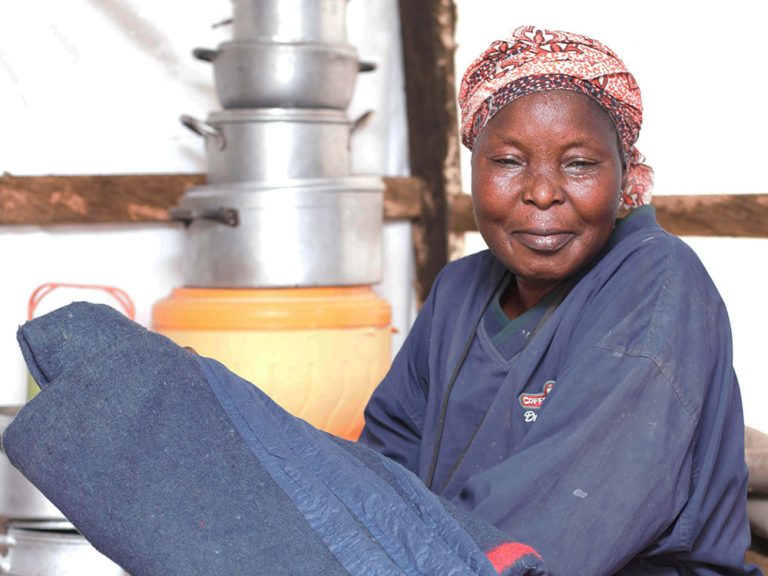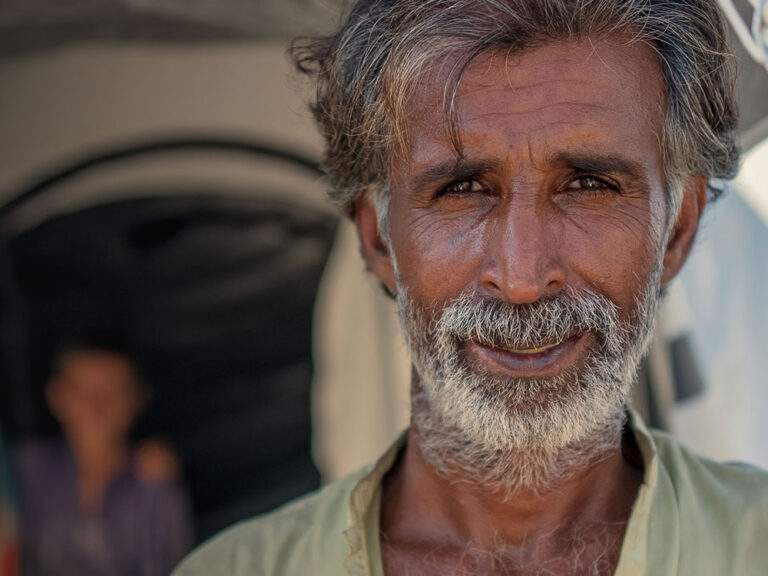In 2022 ShelterBox issued our new 5 year strategy. Building on our over 20 years of experience, this strategy will see ShelterBox become even more focused on the impact emergency shelter can have for people after disaster and conflict.
Based on our strategy, our new Theory of Change has been created. It sums up what we will do and why to support communities affected by crisis.
ShelterBox strategy 2022-2027
You can download our full strategy document below.
Our strategy is based on three key elements:
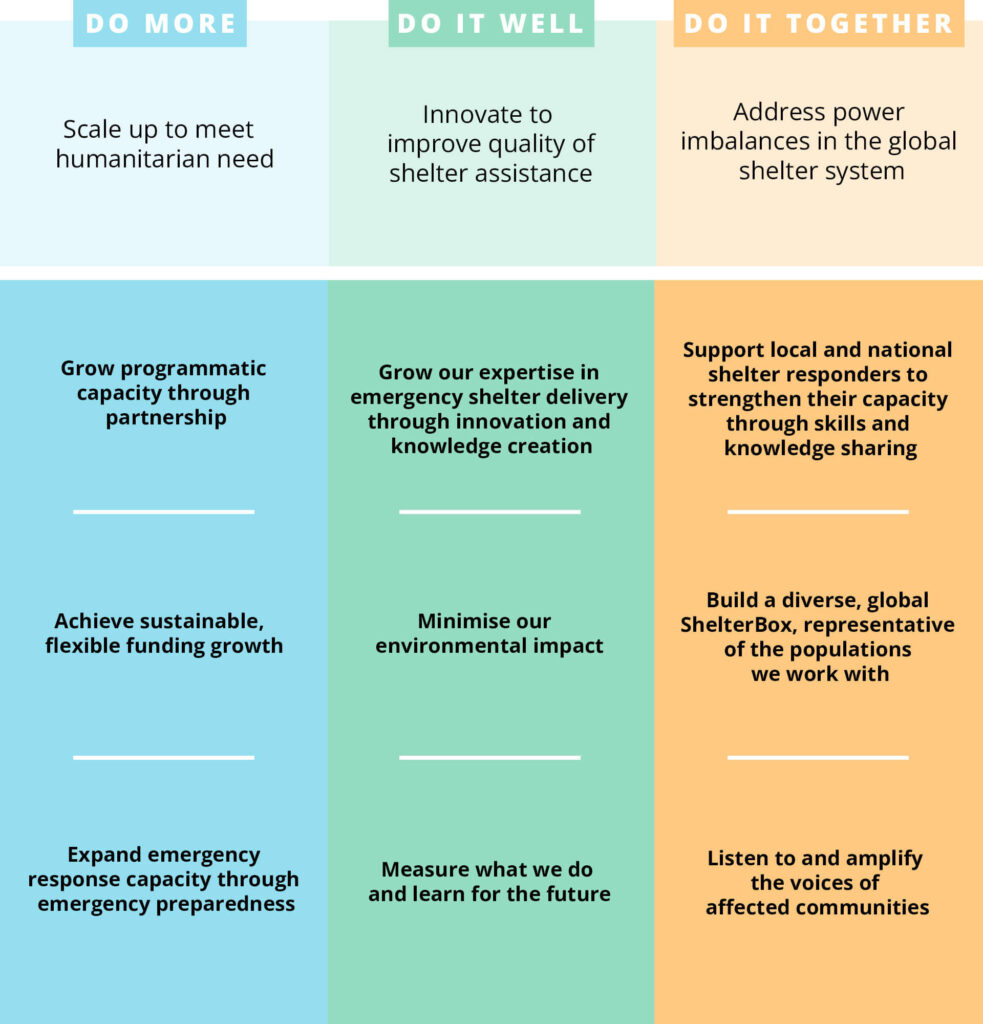
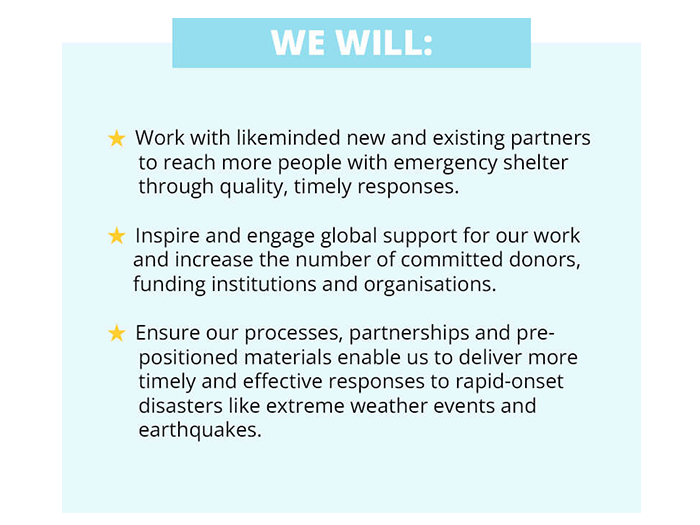
We will scale up to meet humanitarian need: More people than ever are in urgent need of emergency shelter. We must grow to support as many people as possible, recognising that we can’t do it alone. Partnerships are integral to working at scale. Our partnership with Rotary International has been central to our impact for two decades. We will strengthen current relationships and build new partnerships around the world to deliver our mission.
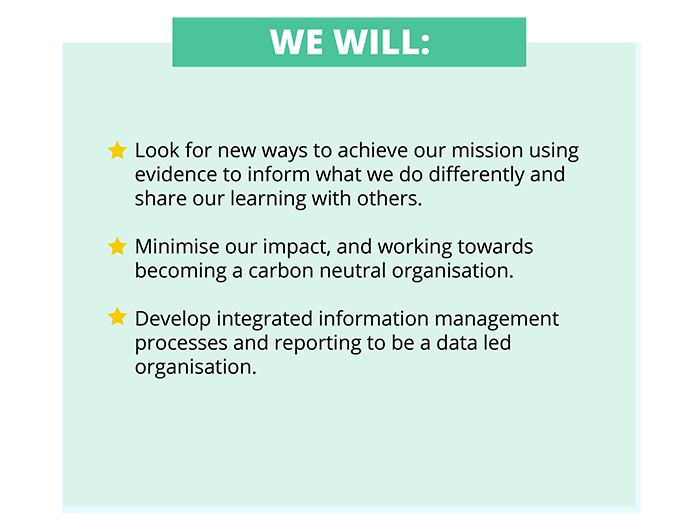
We will innovate to improve the quality of our shelter assistance: We are committing to innovation in shelter assistance, learning and adapting as we grow sustainably. This will include a declaration to become a carbon neutral organisation. This builds on our achievement to date in removing 250,000 problem plastics from our aid. We will share our data and learning with the wider humanitarian community, using evidence to better serve the people we support together.
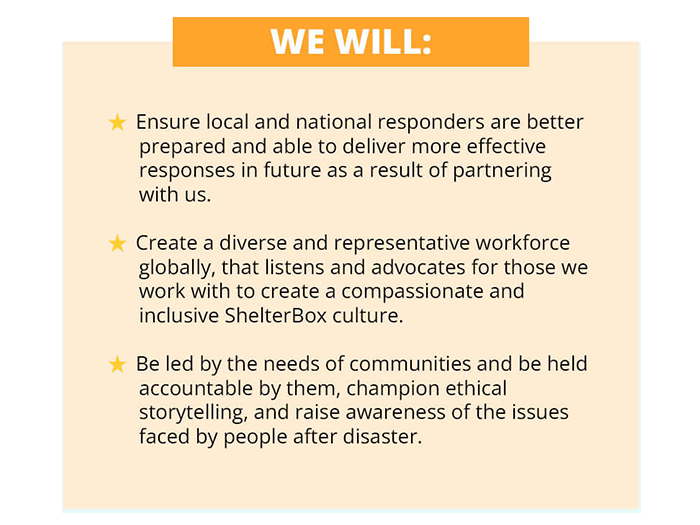
We will address power imbalances in the global shelter system: We will work more closely with the people we support as well as local and national responders to learn and help to strengthen capacity and resilience in those communities. We will champion ethical storytelling, raise awareness of issues that matter to those affected by disaster and conflict, and become a more diverse organisation to better represent the people we serve.
1. Scale up to meet humanitarian need
Globally, the need for emergency shelter is growing every day. Over 100 million people have been forced from their homes by disaster and conflict.
Long running conflicts continue to force families to flee with less than 6% returning to their homes each year. Whilst new wars challenge us to do more at speed and scale.
We are witnessing unpredictable severe weather in more parts of the world. Millions are living with an increasingly destructive climate which is set to worsen as the planet warms. Flooding will increase as heavier rain falls in places that cannot cope with it. Deadly droughts will force thousands from their home in search of food and water.
The need for emergency shelter is constant and increasing. ShelterBox will not only commit to doing more but also to working with partners who are closer to crises and will continue to deliver after the emergency is over.
We will:
- Work with likeminded new and existing partners to reach more people with emergency shelter through quality, timely responses
- Inspire and engage local support for our work and increase the number of committed donors, funding institutions and organisations.
- Ensure of processes, partnerships and pre-positioned materials enable us to deliver more timely and effective responses to rapid-onset disasters like extreme weather events and earthquakes
2. Innovate to improve the quality of our shelter assitance
ShelterBox exists to improve people’s lives. We are committed to doing the very best we can for those affected by disaster or conflict so we can make the biggest difference.
We must keep focused on innovative improvements as we scale up, finding new ways to support people whose homes have been damaged or lost to conflicts and disaster.
We must listen to the people we support and to our local partners. We will work with academic institutions and other organisations to research and understand, improve and find new ways of working, sharing knowledge.
Global issues like the climate crisis require us to think smarter. We must find solutions that enable people to withstand future climate shocks. We must also minimise our own environmental impact. Our support must be inclusive and reach the people who need it most.
We will:
- Look for new ways to achieve our mission using evidence to inform what we do differently and share our learning with others
- Minimise our impact, working towards becoming a carbon neutral organisation
- Develop integrated information management processes and reporting to be a data led organisation.
3. Address power imbalances in the global system
People living in poverty are least able to cope with the destructive impact of disaster and humanitarian crisis.
Events like hurricanes, floods and conflict make situations significantly worse, so it’s even harder to break the cycle of poverty. When homes and livelihoods are lost, people may be forced into negative coping mechanisms that put them at risk of harm or exploitation.
Within the aid system, people holding power are often from high income countries. This can make it hard for those affected by crisis to have a say in the design and delivery of the support they need.
When disasters strike; neighbours, friends and family, and local organisations are always first to help before international agencies arrive. We must build that existing capacity and ensure aid is locally led. This will give power to those best placed to help and ensuring their voices and experiences are heard.
We will:
- Ensure local and national responders are better prepared and able to deliver more effective responses in future as a result of partnering with us.
- Create a diverse and representative workforce globally, that listens and advocates for those we work with to create a compassionate and inclusive global culture.
- Be led by the needs of communities and be held accountable by them, champion ethical storytelling, and raise awareness of the issues faced by people after disaster.
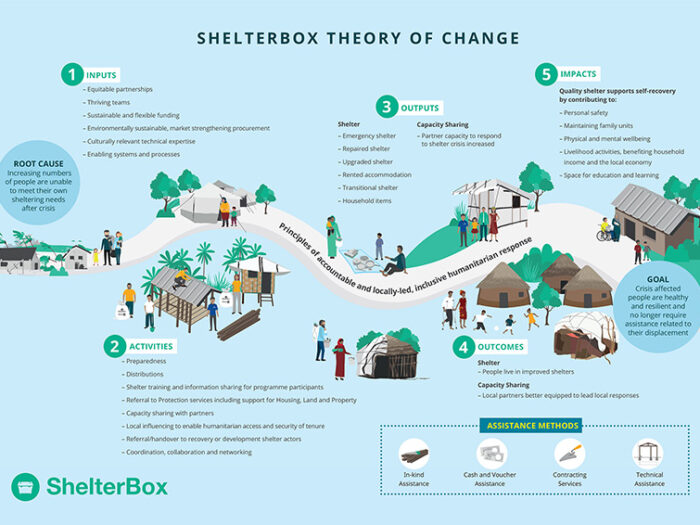
Our theory of change
Our new Theory of Change sums up what we will do and why to support communities affected by crisis. It builds on our years of experience and on the latest evidence of the vital role shelter can play in enabling people to recover and rebuild.
Our focus is on self-led recovery. However, we know that growing numbers of vulnerable people are unable to recover without support.
This leaves them more vulnerable to other risks, such as disease, poverty and environmental threats like extreme weather events. Our Theory of Change commits us to accompanying people on their first steps to recovery, because this increases their chances of further rebuilding their lives.
Click below to discover more about our Theory of Change, including a larger version of our diagram.
Learn More
